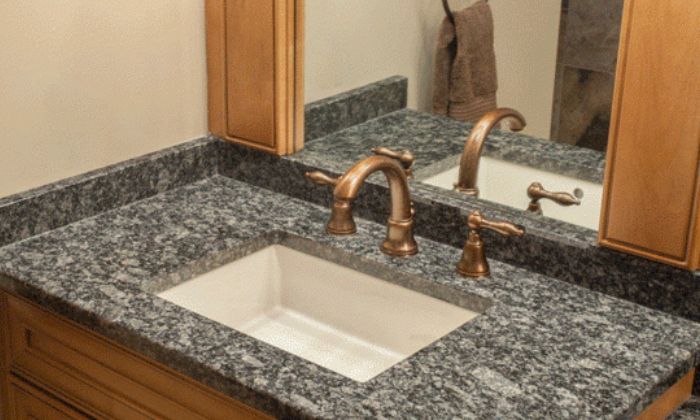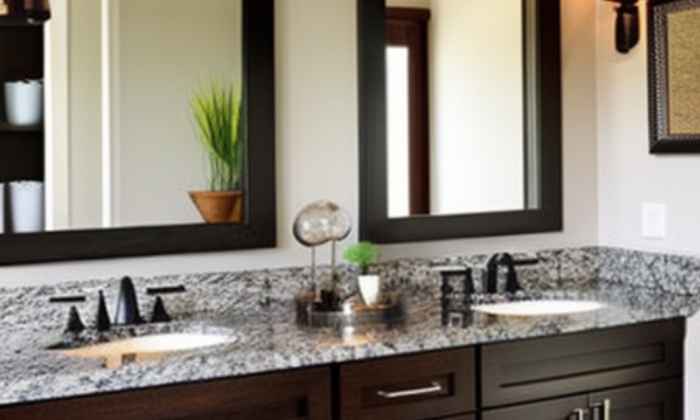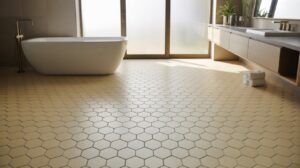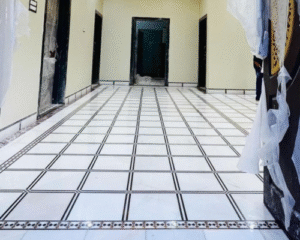Expert Bathroom Granite Countertop Installation Service
Installing a bathroom granite countertop can transform your space into a stylish and functional area. This step-by-step guide will walk you through the entire process, from choosing the right granite slab to securing the sink and applying the final touches.
Granite countertops for bathroom vanities are an excellent choice due to their durability, elegance, and wide range of color options. Let’s dive into why granite is such a popular material for bathroom vanity tops and the steps to install one in your home.
Table of Contents
Toggle
Why Choose Granite for Your Bathroom Countertop?
When selecting a countertop material for your bathroom vanity, granite is a top contender. Here are some of the reasons granite countertops are favored for bathroom vanities:
Durability: Granite is incredibly resistant to scratches, stains, and heat, making it ideal for a bathroom environment.
Natural Beauty: Granite slabs offer stunning natural stone patterns that add elegance to any bathroom design.
Low Maintenance: Once properly sealed, granite requires minimal upkeep to keep it looking pristine.
Variety of Colors: Granite is available in a wide range of colors and patterns, allowing you to choose one that complements your bathroom’s design.
Tools and Materials You’ll Need for Installation
Before you begin installing your bathroom granite countertop, gather the necessary tools and materials:
- Measuring tape
- Level
- Adhesive (specifically for stone countertops)
- Caulk and caulking gun
- Granite sealant
- Circular saw with a diamond blade (if cutting is needed)
- Sink (undermount or drop-in)
- Silicone adhesive for sink attachment
- Cleaning cloths
Bathroom Granite Countertop Installation Process
Measuring and Preparing the Space
Proper measurement is crucial to ensure your bathroom granite countertop fits perfectly. Begin by using a measuring tape to measure the length, width, and depth of your bathroom vanity, making sure to leave room for any overhangs. If you’re installing an undermount sink, determine its position and mark it for cutting out the space in the granite slab.
Next, check the vanity surface for leveling by using a level tool; if it’s uneven, adjust it with shims. Finally, if you’re replacing an existing countertop, carefully remove it without damaging the vanity.
Preparing the Granite Slab
Once your space is measured and prepped, the next step is to prepare the granite slab for installation. If necessary, use a circular saw with a diamond blade to make any cuts to the granite, ensuring you wear protective gear throughout the process.
If the slab doesn’t come with pre-cut spaces for the sink and faucet, carefully measure and cut these openings, making sure everything fits properly. After completing the cuts, smooth the edges using a polishing tool to achieve a polished, finished look that enhances the overall appearance of the granite.
Placing and Securing the Granite Countertop
Now that your granite slab is prepped, it’s time to secure it onto the vanity. Begin by applying a layer of adhesive specifically designed for natural stone onto the top of the vanity. Carefully lower the granite slab onto the surface, ensuring it aligns perfectly with the sink and faucet cutouts.
Once positioned, check for leveling using a level tool, making any necessary adjustments to ensure the countertop is even. Finally, let the adhesive set and dry completely to form a strong bond between the vanity and the granite slab.
Installing the Sink
Whether you’re installing an undermount or drop-in sink, start by attaching the sink. For undermount sinks, apply silicone adhesive around the edges and carefully position it beneath the countertop, while for drop-in sinks, simply lower the sink into the cutout.
Once the sink is positioned, ensure it is securely attached to the granite, using clamps or brackets for additional support if needed while the adhesive dries. After securing the sink, apply caulk around its edges to seal it, preventing water from seeping underneath and causing potential damage.
Sealing the Granite
Sealing your bathroom granite countertop is essential for maintaining its longevity. Granite is a porous natural stone, which means it can absorb water and stains if not properly sealed. Applying a sealant helps protect the surface from damage, preserving its beauty and functionality.
To apply granite sealant, first clean the surface thoroughly and then apply the sealant in even strokes. Allow it to sit for the recommended time before wiping off any excess. To ensure continued protection, reseal the countertop every one to two years, depending on its usage and wear.
Final Touches
After the granite countertop and sink are securely in place, it’s time to complete the final steps, which include installing the faucet and plumbing fixtures, ensuring everything is secure and leak-free. Then, apply caulk around the edges of the countertop to create a waterproof seal between the vanity and the wall.
Finally, clean the granite by wiping down the countertop with a soft cloth to remove any dust, adhesive residue, or fingerprints, leaving the surface spotless and ready for use.
Cost To Install Granite Countertops In Bathroom
The cost to install granite countertops in a bathroom can vary significantly based on several factors, including the size of the countertop, the type of granite chosen, the complexity of the installation, and the region where you live. Here’s a breakdown of the costs associated with installing granite countertops in a bathroom:
Material Costs
Granite Slabs: The cost of granite slabs typically ranges from $40 to $100 per square foot. Exotic or rare granite colors can go higher, up to $200 per square foot.
Granite Tiles: If you opt for granite tiles instead, the price can be around $5 to $15 per square foot, making it a more budget-friendly option.
Labor Costs
Labor costs for installing granite countertops can range from $30 to $100 per hour, depending on the complexity of the job and the contractor’s experience. The average installation cost is often $50 to $75 per square foot for labor.
Additional Costs
Fabrication: If the granite needs to be cut or shaped, fabrication costs can add another $15 to $40 per square foot.
Sink Installation: Installing a sink (especially an undermount sink) can add $200 to $500 to the overall cost.
Sealing: Granite should be sealed after installation, which may incur an additional cost of around $0.50 to $2 per square foot.
Backsplash: Adding a backsplash can increase the total cost by $10 to $50 per square foot, depending on the material and complexity of the installation.
Total Estimated Costs
Small Bathroom (40 sq. ft.): $2,000 to $4,500 (including material and labor).
Medium Bathroom (60 sq. ft.): $3,000 to $7,000.
Large Bathroom (100 sq. ft.): $5,000 to $12,000.
Common Mistakes to Avoid During Installation
When installing a bathroom granite countertop, it’s important to avoid a few common mistakes that can lead to costly issues. First, double-check your measurements before cutting the granite slab to prevent sizing errors. Failing to seal the granite can result in stains and water damage, so this step should not be skipped.
Using the wrong adhesive can affect the bonding, so make sure to use one specifically designed for stone countertops. Finally, precise cutouts for the sink and faucet are essential to avoid misalignment, which can cause installation problems and affect the overall functionality.
Why SF Marble & Granite Is the Best Choice for Bathroom Countertop Installation
SF Marble & Granite in Lowell is the best choice for bathroom countertop installation due to their expert craftsmanship, extensive selection of colors, and use of high-quality natural granite materials. Their team ensures precise cutting and seamless installation, delivering long-lasting and durable countertops that enhance both the beauty and functionality of your bathroom.
With a focus on customer satisfaction, they professionally seal and install each countertop, providing a polished finish that meets your design needs. Choosing SF Marble & Granite guarantees a top-tier service that will elevate the look of your bathroom in Lowell.
Conclusion
Installing a bathroom granite countertop is a rewarding project that can significantly enhance the look and functionality of your bathroom. Granite offers a durable, heat-resistant, and low-maintenance surface that complements any design style.
By following this step-by-step guide, you can ensure a successful installation and enjoy the beauty of natural granite for years to come. Don’t forget to reseal your countertop periodically to keep it protected, and consider working with experts like SF Marble & Granite for a flawless installation.








